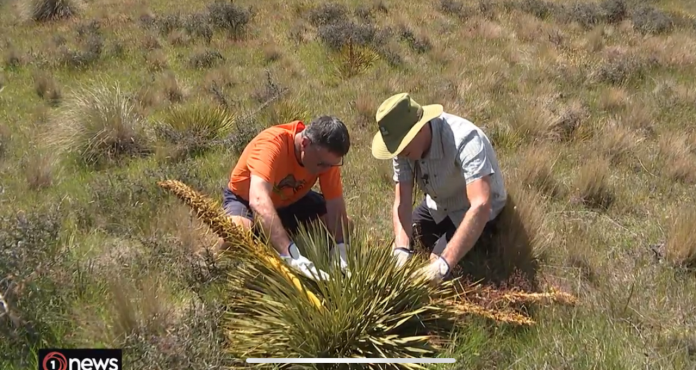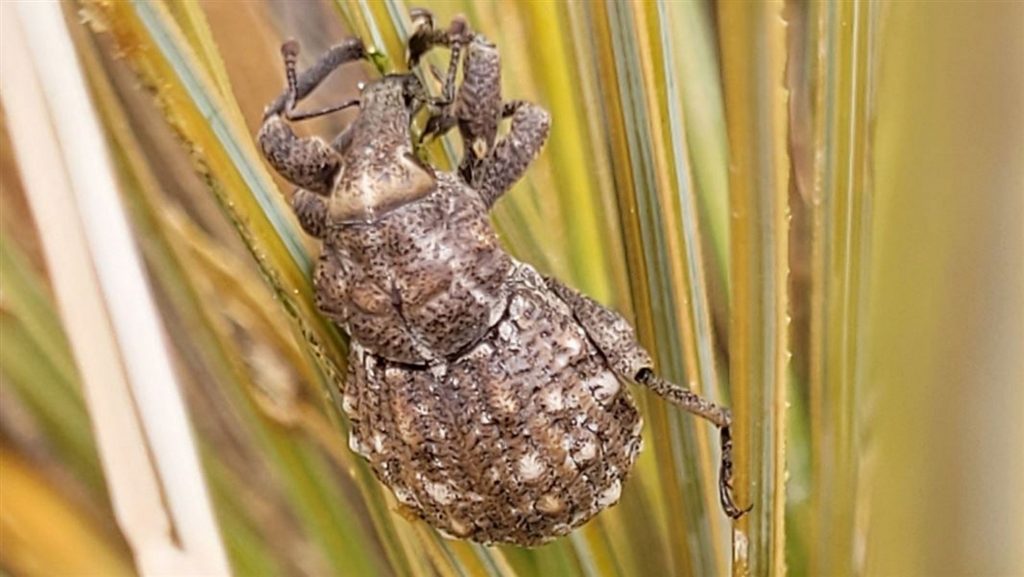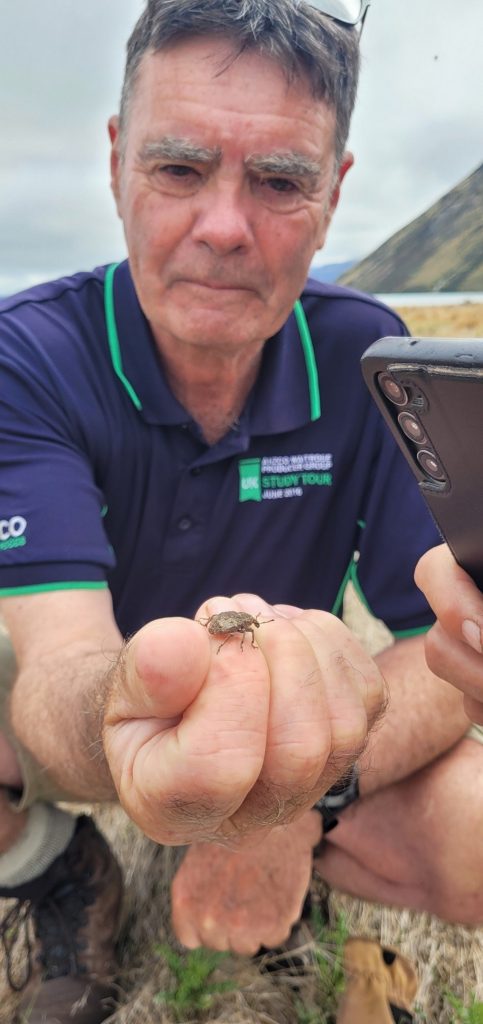
John Evans of Wakanui has had to get used to being in the limelight over the last two months.
After being credited with the discovery of a new population of critically endangered beetles, he has been on television and in newspapers. The latter included the Miami Herald, which likes to report on all kinds of international news.
Most recently Evans has been interviewed for New Zealand Geographic.
Evans said he was ‘‘a bit embarrassed’’ about all the attention.
The retired farmer had been surprised his serendipitous discovery hit headlines nationwide and overseas.
‘‘I’m beginning to understand the significance of it.’’
Evans was out in the Ashburton Lakes late November last year helping volunteers clear predator traps when he noticed what he thought were ‘‘hare turds’’ near the top of shoots of spear grass. A closer look revealed it was three beetles, that looked like weevils.
‘‘Then they dived into the middle of the spear grass,’’ he said.
But he put his hand out and caught one just in time, enabling him to take a photo of it. He uploaded the image to a bug identification Facebook page, and iNaturalist, spurring interest from entomologists and the suggestion it was the rare Canterbury Knobbled Weevil.

Soon Department of Conservation staff were travelling to the site, where they found 41 weevils within two-and-a-half hours.
Technical adviser Warren Chinn told 1News he was stunned at the high catch rate.
‘‘(Evans) found a long-lost population of the weevil which is akin to the takahē in the Murchison Mountains,’’ Chinn proclaimed.
The takahē was long thought extinct when it was rediscovered in 1948.
The discovery was a huge boost for the Canterbury Knobbled Weevil, which is only known to live in one other location at Burkes Pass about 80 km away. That population was rediscovered in 2004, more than 80 years after the species was thought to be extinct in 1922.
DOC senior science adviser Tara Murray said Evans’ discovery was fantastic news.
‘‘Because the Burkes Pass population appears to only be hanging on by a thread, the newly discovered population will likely prove to be the difference between this species surviving and slowly disappearing,’’ Murray said.
“Both populations are small, so they could easily be wiped out by fire or a few years of bad growing conditions for the speargrass plants they rely on.”




